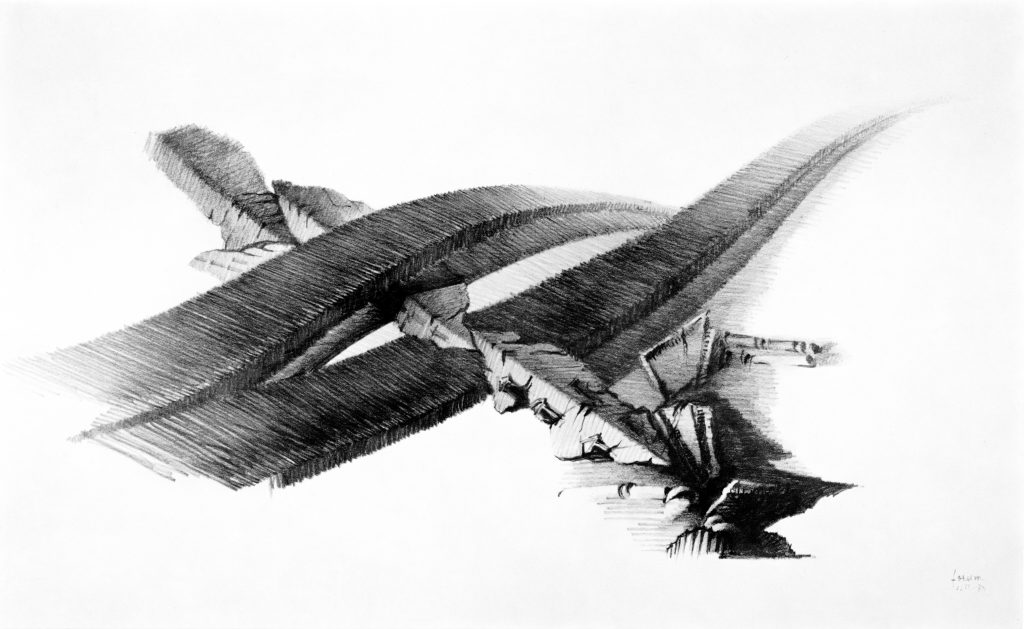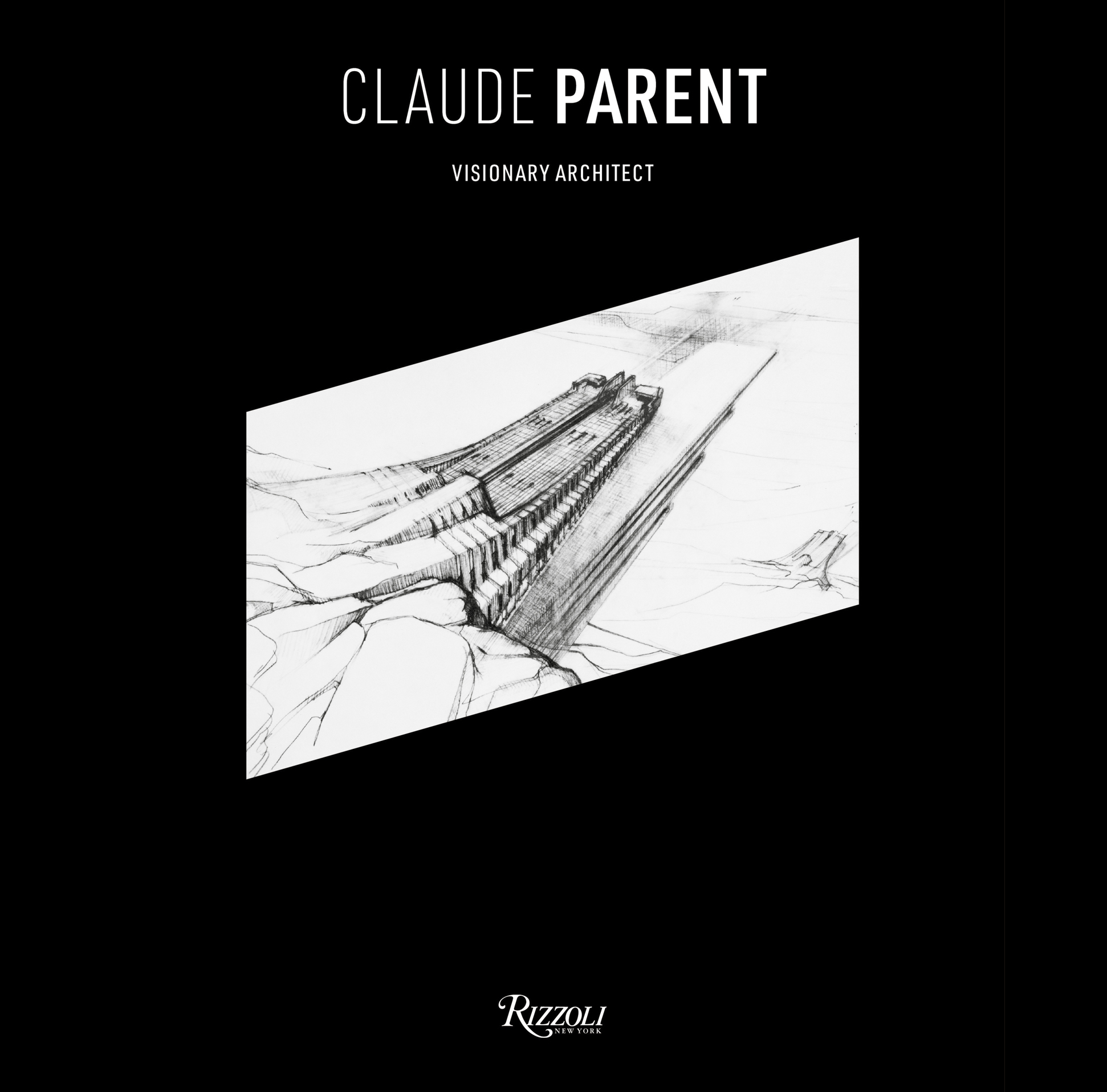***
Title: Claude Parent: Visionary Architect
Editor: Chloé Parent
Publisher: Rizzoli. 2019. ISBN: 978-0-8478-6215-3
Language: English
223 pages
***
“Drawing is a manual thing – mental as well, of course – but manual in that it lasts, it takes time, it is fastidious, it calls for patience… My imagination is at work for the whole of a drawing that can last sometimes two weeks. It’s a complex thing, a drawing transforms itself, it never is as one had imagined it to start with. Drawing is an adventure that fascinates and sustains me.”
“Dibujar es un algo manual – también mental, por supuesto – pero manual en lo que se refiere a que es un acto que lleva time, se extiende en el tiempo, es fastidioso, se necesita de paciencia. Mi imaginación está en ello durante el tiempo que tardo en realizar el dibujo que a veces puede durar hasta dos semanas. Es algo complejo, un dibujo se transforma en sí mismo, nunca es lo que uno s e imaginó en un primer momento. Dibujar es una aventura que me fascina y me alimenta.”
Claude Parent: Visionary Architect 2019, edited by Chloé Parent, published by Rizzoli. page 55. Traducción al español por Hidden Architecture

I open one page of the book Claude Parent: Visionary Architect, and I find a double-page pencil drawing. It is an aerial view where an artificial tangled and continuous surface sits on a large horizontal plane, a desert. As if it is a roller-coaster, this surface creates different topologies: a spiral, a ramp, a loop, until it gets lost, and its silhouette mergers with the profile of some mountains on the horizon. Small human figures, drawn in the foreground, implies a gigantic territorial scale. These people come out from some ramp openings that suggest that there may be a lower level under the oblique surface, and they start walking through the loop to the horizon. The sharp shadows of the drawing emphasize the angled planes of the geometry and provoke a dramatic effect in the landscape. The diagonal composition of the drawing and its render – a foreground is sharply drawn and a delicate depiction once the perspective move to the horizon – sharpens the drama of the, apparently, infinite architectural form.
Al abrir una página del libro Claude Parent: Visionary Architect, me encuentro con un dibujo a lapicero a doble página. Es una vista aérea donde una superficie artificial, enmarañada y continua se posa sobre un gran plano horizontal, un desierto. Como si de una montaña rusa se tratara, dicha superficie va creando distintas topologías: una espiral, una rampa, un loop, hasta perderse en el horizonte donde su silueta se confunde con el lejano perfil de unas montañas. La escala territorial, gigantesca, del objeto arquitectónico se entrevé porque, en el primer plano de la ilustración, hay dibujadas unas minúsculas figuras humanas. Estas personas salen de unas aperturas en rampa, que presuponen un nivel inferior bajo el manto inclinado y se disponen a caminar por el loop hacia el horizonte. En el dibujo destacan las sombras proyectadas en el territorio que enfatizan los planos inclinados de la geometría y provocan un efecto dramático en el paisaje. La composición del propio dibujo, formando una diagonal con un primer plano de trazos gruesos y una mayor delicadeza según la perspectiva, aleja el dibujo del espectador y agudiza el dramatismo de la forma arquitectónica sin principio ni fin aparente.
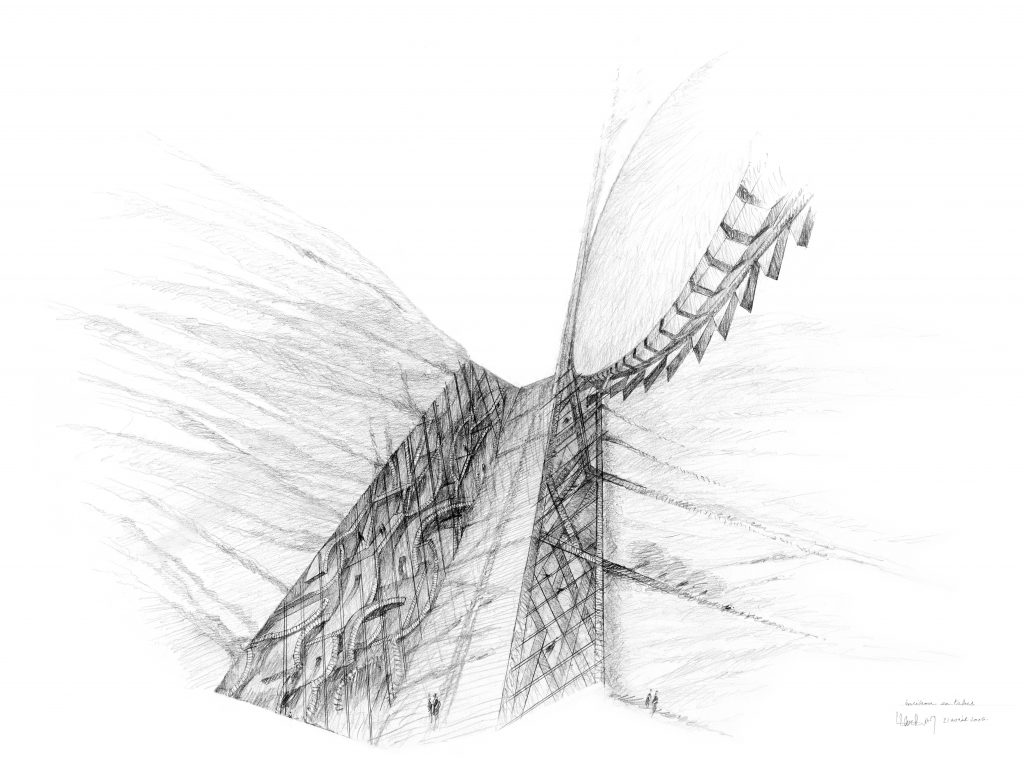
Doing the same descriptive exercise about another illustration of the book, I can find similarities with the previous drawing. In this case, it is smaller, and its scale, based on the size of the human figures depicted, shows the building-size structure. Parent used ink to draw it, provoking a more precise definition that suggests balustrades and ornamental elements. Two main features are similar to the previous drawing: the architectural form without clear boundaries seems infinite. Moreover, its architecture has a series of ramps that connect walkways at different levels. As the previous drawing, the oblique surfaces are the principal elements. They create spaces that demand continuous movement by users.
Al realizar este ejercicio descriptivo sobre otra ilustración del libro, puedo encontrar varias similitudes con el dibujo anterior. En este caso el dibujo es más pequeño y su escala, por el tamaño de las figuras humanas, muestra unas dimensiones más cercanas a las de un edificio. Está realizado con tinta por lo que los trazos tienen una definición más precisa, insinuando barandillas y elementos ornamentales. Hay dos constantes que se repiten: La forma arquitectónica, sin límites claros, parece infinita. Además, su arquitectura se compone principalmente de una serie de rampas que conectan pasarelas a distintas alturas escalonadas. Como en el dibujo anterior, las superficies oblicuas tienen mayor protagonismo provocando espacios que exigen el constante movimiento de los usuarios.
During its whole life, the oblique function was the main topic of Claude Parent architecture. Drawing was the tool to develop these ideas. Through his illustrations, he carried them out further that any built project would ever have done. The oblique planes created a condition of continuous movement that offered an alternative to the sedentary model. Through an endless imagination and absolute control of drawing, Claude Parent tirelessly worked and adapted the social hopes of his architecture, the cultural conditions of each moment. The monograph Claude Parent: Visionary Architect analyzes this concept mainly through his drawings. The book has a chronological organization, and it is divided by decades – from the 1960s to the 2010s. Each decade has a generous number of architect´s drawings, and it is preceded by a small text written by the own Claude Parent and another by different architects that met him through his life.
Durante toda su vida, la función oblicua fue el tema central de la arquitectura de Claude Parent, y el dibujo fue el medio para desarrollar estas ideas que le permitieran dirigirlas hacia lugares que la propia obra construida nunca sería capaz. Los planos inclinados generaban una condición de continuo movimiento que ofrecía una alternativa al modelo sedentario. Mediante una imaginación sin límites y un control absoluto del dibujo, Claude Parent trabajó de manera incansable y fue adaptando las aspiraciones sociales de su arquitectura en función de las condiciones culturales de cada época. La monografía Claude Parent: Visionary Architect se centra en el desarrollo de este concepto, principalmente a través de los dibujos. El libro se organiza de manera cronológica por décadas – desde los años 60 hasta la década de 2010. Cada década contiene una generosa muestra de dibujos realizados por el arquitecto y viene precedida por un pequeño texto del propio Parent y otro de diferentes arquitectos que le fueron conociendo a lo largo de su vida.
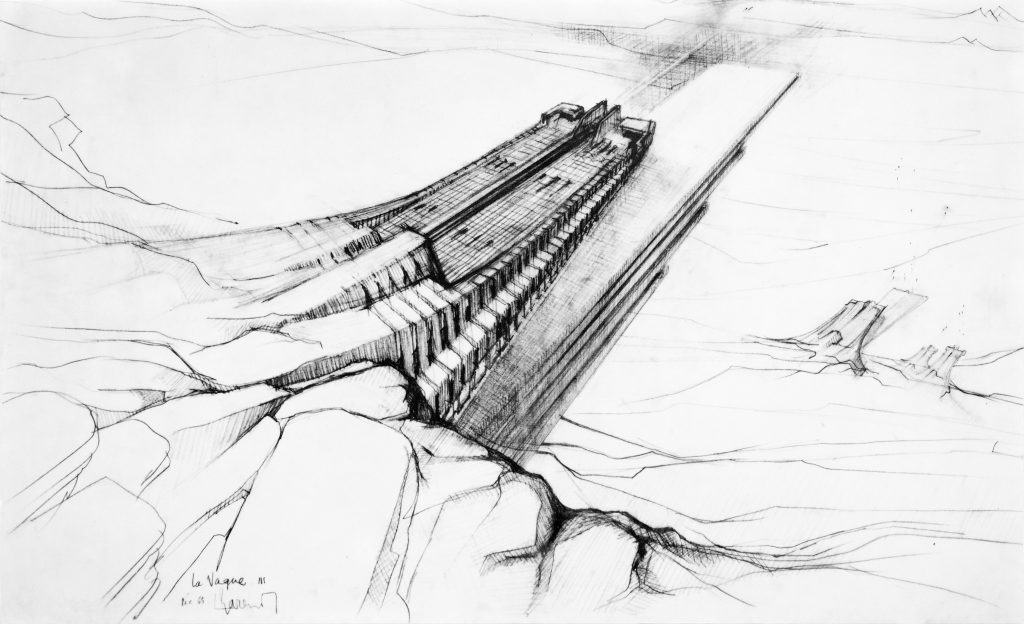
The collection of drawings exposed in the book is vast and accurate. Still, I missed some of the vector sketches that Claude Parent drew in the 1960s, where he precisely started to analyze the oblique architectural condition. Moreover, the contributions by well-known architects such as Frank Gehry, Jean Nouvel, and, especially, Wolf D. Prix are remarkable. Prix recalled when they together used the Exquisite Corpse as a creative process for the Center Tours project in 1993. It is also noteworthy the last Chloé Parent article at the end of the book, where she offers an intimate view of the architect and his architectural approach. Although the Parent´s built projects are not the central core of the book, this provides a selection of them shown in photos and sketches.
La colección de dibujos expuestos en el libro es generosa y acertada aunque se echa en falta algunos de los croquis más vectoriales de la década de los años 60 donde empieza a analizar de forma matemática esta condición arquitectónica. Cabe destacar además, las contribuciones por parte de figuras como Frank Gehry, Jean Nouvel y especialmente Wolf D. Prix. Este último recuerda como usaron la idea del Cadáver Exquisito como proceso creativo para el proyecto del Center Tours en 1993 que realizaron juntos. También es necesario alabar el texto final de Chloé Parent que nos ofrece una visión más íntima del arquitecto y su forma de trabajar. Aunque el libro no se centra en la obra construida de Parent, ofrece un espacio para asomarnos a algunos de los proyectos más relevantes construidos a través de fotografías y croquis.
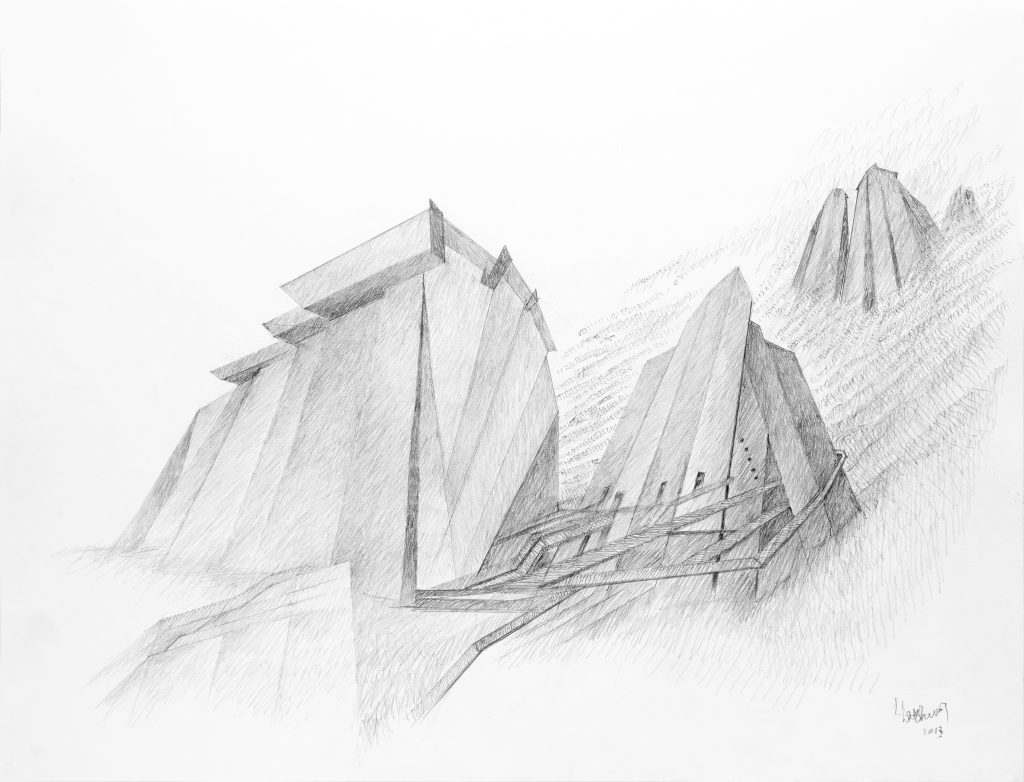
When I read again the texts of the architect as well as those by the people who joined him through his life, I keep remembering a series of words that, probably, define the creativity and approach of Claude Parent.
Releyendo los textos del propio arquitecto así como de las personas que le acompañaron durante su vida aparecen una serie de palabras no puedo olvidar y que seguramente definan con precisión la creatividad y el talante de Claude Parent:
Human Life, Experience, Instability, Consciousness, Oblique Function, Movement, Opener, Dreamer, Stories, Migration, Territory, Rage, Urban Vocabulary, Pencil, Freedom, Generosity, Circulation, Sedentary, Visionary, Architect.
Vida Humana, Experiencia, Inestabilidad, Conciencia, Función Oblicua, Movimiento, Descubridor, Soñador, Historias, Migración, Territorio, Rabia, Vocabulario Urbano, Lápiz, Libertad, Generosidad, Circulación, Sedentarismo, Visionario, Arquitecto.
